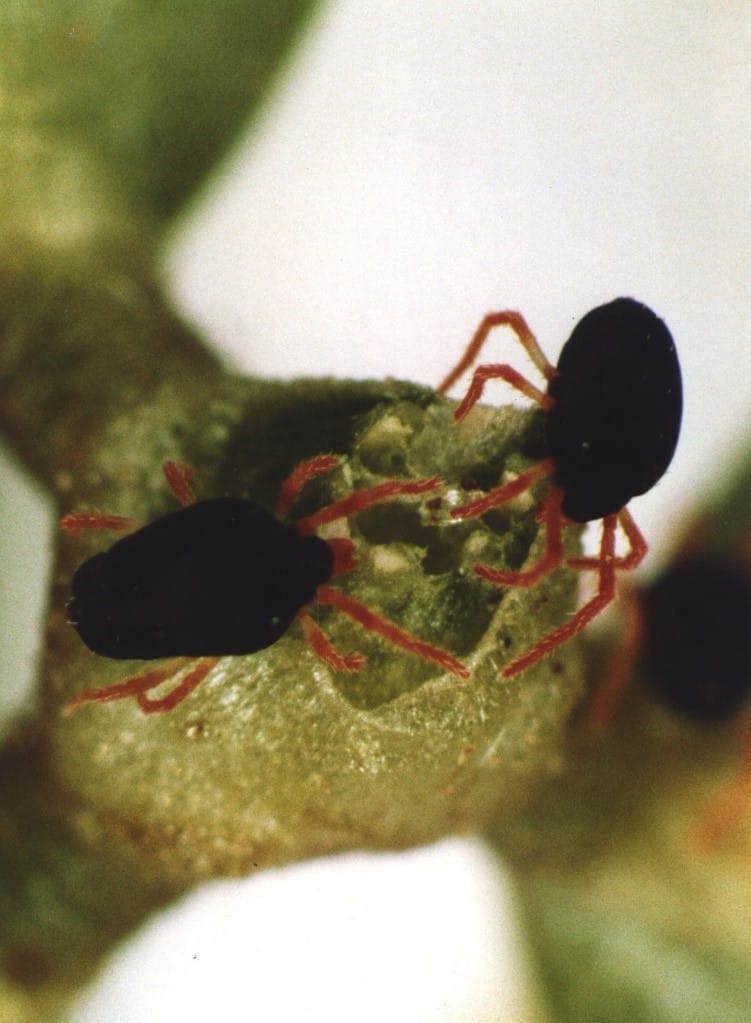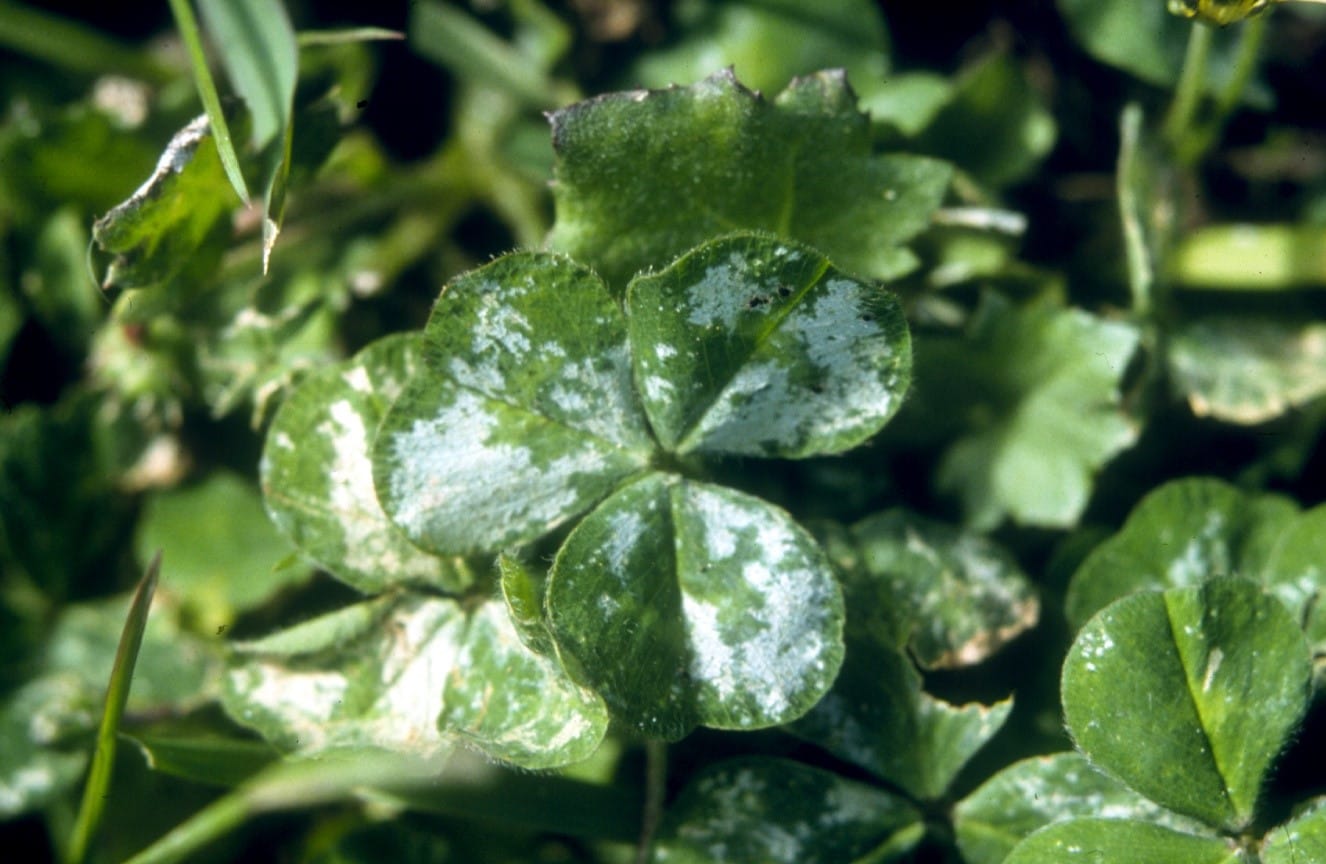Article Summary:
The redlegged earth mite is an unwelcome guest in our pastures. But the good news is that there are several ways to throw these pesky guests out before they make a permanent home out of your lush pastures and cause a whole lot of havoc. In this article, let’s talk about a few long-term and sustainable ways to control redlegged mite infestations.
The redlegged earth mite is an unwelcome guest in our pastures.
But the good news is that there are several ways to throw these
pesky guests out before they make a permanent home out of your lush pastures and cause a whole lot of havoc.
Let’s talk about a few long-term and sustainable ways to control redlegged mite infestations.
How do they look?
Redlegged mites are usually about 1 mm in length and they have a velvety black body and eight legs that are orange in color. They are one of the most common pasture pests that are active from autumn to late spring in southern Australia.

Redlegged earth mites aren’t picky about their food. Their favorite snacks include canola, wheat, barley, oats, lupins, sunflower, lucerne, vetch, pasture legumes and grasses. And when they feed on plants, it causes a silvering or a white discoloration in the leaves. In cases of severe infestations, the leaves can get distorted and shriveled up. Sometimes, this ‘silvering’ effect is often mistaken for frost damage.

Studies have shown that redlegged mites have been known to be directly responsible for reducing the palatability of pasture.
Monitoring the mites
Thoroughly inspect your pastures from autumn till spring for the presence of mites. Crops must be checked in the first 3-5 weeks after sowing. They’re more easily detectable in the mornings or on days where it’s cloudy and overcast.
And if you find that you can’t see any mites on the leaves, beware, because they just might be in the soil. A good way to sample mites is to use a vacuum machine or a garden blower. Place a sieve or a fine stocking over the end of the suction pipe to trap mites that are vacuumed up from plants and the soil.
A power-packed arsenal of chemical, biological, cultural and management practices is required to fight RLEM. Let’s discuss.
Chemical control
Although farmers and pest management agencies are trying to find out better long-term and sustainable methods that limit the use of chemicals, chemical control still remains the major method in fighting RLEM.
The level of pest abundance at which control becomes cost-effective is called ‘threshold’.
Cotyledon stage: If mite damage like silvering or whitening of leaves extends to 20% of the plants or more, and mites are present, it means that treatment is needed.
1st true leaf stage: At this stage, if there are 10 mites per plant, then treatment is needed. If there are fewer than 10, you don’t need to spray, instead, keep rechecking the paddocks in 5 days if the growth of crops is low and then check in 10 days if the growth is quick.
2nd true leaf stage: If there are less than 30 plants/metre square and mites are present, you will need to treat it. If there are more than 30 plants per metre square and most of the plants don’t show any feeding damage by the mites, then there is no need to spray. As in the 1st stage, keep rechecking the paddock in 5 days if the crop growth is slow, and then check in 10 days if the crop growth is fast.
3rd leaf stage and beyond: In this stage, you will not find any benefits with spraying except if the plants are under severe moisture stress or waterlogging and if mite numbers are more than 2000 per metre square.
Seedlings of crops and pasture species that are vulnerable to mites can be protected by coating seeds with chemicals before seedling by using contact sprays that are applied to the earth before the seeds sprout.
During the growing season, mites can be controlled in pastures by using a foliar spray about 2 weeks after the first rains and cool weather which encourages the hatching of mites. A spray of fence lines can also be used to prevent mites from entering the crop. Extensive use of synthetic pyrethroids which make up 25% of the world pesticide market has caused resistance in other insect pests.
Biological control:
Biological control in spring provides seed yield benefits in pastures and increased seedling density in autumn. Controlling RLEM in spring reduces over-summering eggs and damages the mite population during the next autumn. Timerite was specifically developed for the control of RLEM. Its timing is based on a model to predict the date of onset of diapause egg production.
Monitoring RLEM population and using Timerite along with other strategies like grazing management and crop rotation is biological control at its best!
Cultural control:
Cultural control involves altering farming practices to reduce the population of RLEM in a manner that’s both long-term and sustainable. Cultural methods include grazing management in spring, crop rotations, using border crops to repel mites and improving the management of weeds.
Top management strategies:
- Remember to spray only if you need to. RLEM have resistance to synthetic pyrethroids. Rotate chemical groups in-between seasons as this helps to reduce resistance occurring.
- Instead of spraying whole paddocks, use insecticide treatment for crops and new pastures that have low pest pressure. This way, there is a smaller amount of pesticide used that will directly target plant-feeding pests.
- Late autumn or winter-sown crops are where RLEM are most likely to hatch before seeding. One week of bare soil can starve most of the mite population even before the crops are grown.
- Control weeds in the crop and also along fencelines as this provides a nice living environment for mites. A crop that is free of weeds will have fewer mites and over-summering eggs that end up being carried into the next season.
- Want to know something that’s proved to be almost as effective as chemical sprays? Controlled grazing! Controlled grazing of pasture paddocks that will be cropped during the next year will help in reducing mites to a huge level. Sustained grazing during spring can also be followed.
- Single out paddocks that are to be cropped during spring and apply insecticides on those paddocks to prevent the RLEM population from producing over-summering eggs. This will help in cutting down the population for the next autumn.
- Revisit your cropping rotations to help reduce the reliance on pesticides. The risk is generally quite high if the paddocks have been in long-term pasture with a high number of broad-leafed plants where mite populations are not under control. Low-risk paddocks that don’t generally need mite control are those that follow a weed-free crop.
RLEM control is a long journey indeed. There are chemical, biological, cultural and management practices that have to be followed as part of a three-pronged approach to fight these mighty mites.
Knowing your enemy, that is, knowing how to correctly spot RLEM, distinguishing them from other species in crops and pastures is very important.
The economic damage of these pests can be managed by aligning the pests’ lifecycles to spot their weakness and extinguish their existence.
As always, there is no cookie-cutter, tried and tested approach to pest management. It is unique to each farm and professionals must be contacted to put the right Integrated Pest Management plan in place.
- The Dedicated Team of Pasture.io, 2021-05-26